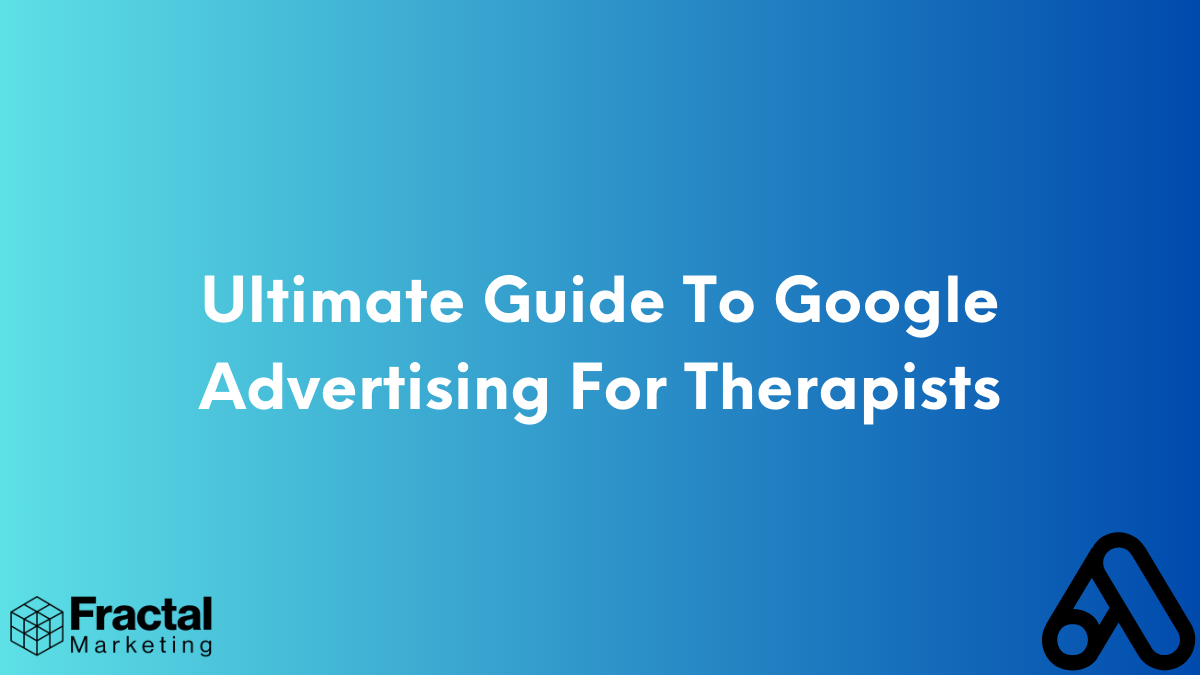“How to Create a Google Ads Campaign for Your Therapy Practice in 2024”
Are you a private practice counsellor, psychologist, or psychotherapist grappling with a sparse client roster? Each unfilled appointment not only means lost income but also represents a missed opportunity to aid someone in need and grow your practice.
Navigating this challenge is rarely straightforward. While graduate school might hone your therapy skills, it often falls short in teaching the vital skills needed for attracting new clients.
Newly practicing therapists are frequently advised to establish an online presence, starting with a website. However, without a robust online growth strategy, many find this approach leading to disappointing results, frustrated by the prolonged time it takes to populate their client roster.
Introducing Google Ads
There’s a beacon of hope for predictable growth and reaching potential clients actively seeking therapy services – Google Ads. When used adeptly, Google Ads emerges as a formidable tool for online business growth in 2024.
Why does Google Ads stand out as a marketing powerhouse? Unlike other advertising methods, Google Ads excels in connecting you with individuals genuinely interested in your services, precisely when they are considering therapy. This strategic timing minimizes the risk of your ad being overlooked, ensuring it stays prominent in potential clients’ minds during their therapist search.
Google Ads could be heralded as the most potent advertising tool in 2024. However, mastery is key. Without a proper understanding, it’s easy to squander funds on ineffective keywords and clicks, leading to frustration and a premature abandonment of the vast potential Google advertising holds for your practice.
Curious about how I’ve come to understand all this? Allow me to introduce myself.
About Me and Fractal Marketing
Hello! I’m Adam, the co-founder and lead strategist for Google advertising at Fractal Marketing. We’re a digital marketing agency specializing in helping private practice counsellors, psychologists, and psychotherapists expand their practices through Google Advertising and web development.
And indeed, this guide is your ultimate resource for mastering Google Ads for therapists!
In the past five years, I’ve invested over $250,000 in Google Ads campaigns specifically tailored for therapy and counselling services. This experience has not only honed my skills in crafting successful and profitable campaigns but also played a pivotal role in the growth of numerous therapy practices.
Several of our clients at Fractal Marketing have experienced such significant growth that they’ve transitioned to larger office spaces.
Now, I’m excited to share all my insights and strategies with you!
This guide covers everything from the basics of the Google Ads platform to preparing for advertising, creating your initial campaign, and scaling it effectively. I’ll guide you through conducting thorough keyword research, determining your starting bids and budget, and setting up ad groups. You’ll learn how to craft compelling ads that convert.
Additionally, once you start accumulating real conversion data, I’ll demonstrate how to optimize your ads for increased conversions at a lower cost each month.
A word of caution: Google Ads can appear daunting, especially with its feature-rich dashboard. It’s common to feel overwhelmed or confused initially. However, with patience and a focus on sound digital advertising principles, you can achieve great success with Google Ads.
If you have any questions along the way, feel free to reach out to me on LinkedIn, or contact us at Fractal Marketing for personalized account management and growth services.
Now, let’s get started!
Before You Get Started
Recognizing the sophisticated nature of Google Ads as an online marketing tool, it’s crucial to assess whether your practice is prepared for the investment it entails. Before diving into your first campaign, I suggest ensuring the following:
- Client Capacity: Your practice should be ready to accommodate at least 10 new clients every month.
- Effective Website: Possess a professional, therapy-focused website with clear contact information prominently displayed at the top.
- Advertising Budget: Allocate a minimum monthly advertising budget of $600, which equates to about $20 per day.
- Bonus Tip: If possible, offer a free 15-minute initial consultation to attract prospective clients.
Lastly, for a broader understanding of the Google Ads platform, I highly recommend exploring Google’s own internal guide. This resource can provide valuable foundational knowledge that will complement what you learn here.
Keyword Research
Keywords are the cornerstone of your Google Ads account, and selecting the right ones can be the difference between success and failure on the platform. To begin, let’s define what a keyword is: it’s the word or phrase someone types into the Google search bar. Here are several examples of high-quality, therapy-related keywords:
- child therapist
- couples therapy Toronto
- counsellor near me
- anxiety specialist in Waterloo
- best online therapist in Hamilton
- relationship therapist
- mental health therapy
To kickstart your keyword research for your practice, a great resource is the Google Keyword Planner.
This tool aids in identifying keywords that are most pertinent to the services you offer and provides essential data for each keyword, such as monthly search volume, average cost, and competition level.
Upon accessing the planner, you can begin your search either by entering your website’s URL or with a keyword idea. The crucial aspect here is to focus on keywords that demonstrate high relevancy and strong customer intent.
Example: Couples Therapist in Toronto, Ontario
For instance, if we examine keywords for a couples therapist in Toronto, we discover a variety of potential keywords to include in the campaign. This process not only reveals the keywords people in Toronto are actively searching for (and those they aren’t), but it also provides useful suggestions for expanding your keyword strategy.
Additionally, the planner offers insights into the high and low ranges of cost per click (CPC) specific to Toronto. With this valuable information, you can develop a well-informed and effective strategy for your Google Ads campaign.
Building Your First Local Search Campaign
It’s time to embark on building your first Google Ads campaign. Here’s how you can get started:
- Creating or Accessing Your Google Ads Account:
- Sign in to your existing Google Ads account, or create a new one here.
- Note: New accounts may be eligible for a $600 ad credit.
- Setting Up Your Campaign:
- Once you’ve set up your account and entered billing information, select “New Campaign” on the home page.
- Opt for a campaign with the goal of generating “leads”.
- Campaign Type and Objective:
- Choose a “Search Campaign” and target “Website Visits” as your objective.
- Campaign Naming:
- For clarity, name your campaign by type, province or city, and the bidding strategy. For example, “Toronto-CouplesTherapy-ManualBidding”.
- Choosing Your Bidding Strategy:
- Initially, select “Conversions” as your bidding strategy. This can be changed to manual bidding later.
- Campaign Settings:
- In the campaign settings, uncheck “Include Google search partners” and “Include Google display network”. We want our ads to appear only on the Google search network for the highest customer intent.
- Target Locations:
- Define the locations you wish to target. For online practices, consider city, province, or state-wide advertising.
- For local practices, use “Advanced Search” to set a 10-20 km radius. Remember to save these settings.
- Language, Audience Settings, and Assets:
- Adjust language settings as per your practice’s requirements.
- Turn off both broad match keywords and the option to automatically create assets.
Organizing Ad Groups and Ads
For a relationship therapist in Toronto, organizing the keywords into specific ad groups enhances the campaign’s relevance and effectiveness. Here’s how I would categorize them:
Ad Group 1 – Couples Therapy
- Keywords:
- couples therapy Toronto
- couples therapy downtown Toronto
- couples therapy Toronto in person
- affordable couples therapy Toronto
- couples counselling downtown Toronto
Ad Group 2 – Marriage Therapy
- Keywords:
- marriage therapist Toronto
- marriage counselling Toronto
- best marriage counselling Toronto
- marriage therapist Toronto
- marriage and family therapy Toronto
Ad Group 3 – Relationship Therapy
- Keywords:
- relationship counselling Toronto
- best relationship therapist Toronto
- relationship therapist Toronto
- relationship psychologist Toronto
- online relationship therapist Toronto
By segmenting the keywords into these three distinct categories, the campaign is more likely to display ads that closely match what potential clients are searching for. This strategic alignment often results in higher click-through rates and, subsequently, an increase in conversions each month.
For further details on organizing ad groups and maximizing their effectiveness, you can find more information here.
Remember, the key to a successful campaign is ensuring that your ad groups are tightly themed and relevant to your target audience’s search queries. This approach not only improves the user experience but also enhances the performance of your Google Ads campaign.
Creating Ads
Now, we arrive at a crucial step: creating the ads that will draw potential clients to contact you. Let’s begin with crafting a new Responsive Search Ad (RSA).
Responsive Search Ads combine the power of machine learning with your insights into high-intent keywords relevant to your practice. Keep in mind that each part of the ad has a character limit, so brevity and clarity are key.
Your ad should resonate with the specific keywords in your ad group to ensure it aligns closely with user searches. Aiming for click-through rates above 6% is ideal. Rates below this threshold often indicate a mismatch in keyword selection or a need for ad copy refinement.
Example for a Toronto Couples Therapist Campaign:
In creating an ad for a Toronto couples therapist, I adhere to several best practices:
- Keyword Emphasis: The main keyword, ‘couple therapy Toronto’, is incorporated multiple times for relevance and visibility.
- Targeted URL: The final URL directs users to a specific page on my site discussing couples therapy.
- Call to Action: The ad includes a direct call to action, such as ‘Call Today’, both in the headline and description.
- Unique Offering: It highlights a special feature, like a ‘free consultation’, distinguishing it from competitors.
- Professional Tone: The use of complete, compelling sentences ensures the ad appears professional and unique.
Your ad might differ in tone or style, and that’s perfectly fine. What’s crucial is adhering to these best practices to ensure your ad’s effectiveness.
For more in-depth information on Responsive Search Ads and how to leverage them effectively, additional resources can be found here.
Remember, the key to a successful ad is not just in what you say, but how you say it. Tailoring your message to your audience while adhering to these guidelines will help you create impactful, click-worthy ads.
Setting Your Campaign Budget
The final step before launching your campaign is establishing your daily budget. This is a crucial aspect as it directly influences the reach and effectiveness of your ads.
Your daily budget should align with your conversion goals. Generally, I recommend setting a minimum daily budget of $20.00. However, experience shows that a daily budget of $50 or more often yields better results.
It’s important to remember that Google operates on a pay-to-play model. Essentially, the more you invest, the greater the potential returns. A higher budget allows for more extensive ad exposure and, consequently, more opportunities to attract clients.
Keep in mind that the right budget for your practice might vary depending on several factors, including your location, competition, and the specific services you offer. It’s about finding a balance between what you can afford and what is necessary to achieve your desired outcomes.
As you proceed with your campaign, monitor your spending and performance closely. This will help you understand whether your current budget is effective or if adjustments are needed to optimize results.
Ongoing Optimization
Launching your campaign is just the beginning. Regularly optimizing your account is essential for maintaining and improving its performance. Here’s a guide for ongoing optimization:
- Monitor Cost Per Click (CPC): Regularly check your keywords’ CPC. Ensure that you’re ranking on the first page for your main keywords without overpaying for underperforming ones.
- Review Search Terms Report: This report is invaluable for discovering new keyword opportunities and identifying irrelevant search terms to add to your negative keyword list.
- Analyze Conversion Rates and Costs: Keep a close eye on your account’s overall conversion rate and the cost per conversion for each keyword. Also, pay attention to the individual keyword quality score.
- Pause or Optimize Underperforming Keywords: To reduce costs and improve your account’s conversion rate, regularly assess and adjust underperforming keywords.
- Adapt Bidding Strategy: Once your account begins to consistently receive around 15 conversions per month, consider switching from manual CPC to target cost per conversion. This is also a good time to experiment with a few more broad match keywords.
- Scaling Your Campaigns: When you reach this stage, the Google Ads algorithm is effectively aiding your business, allowing you to scale your campaigns beyond 50+ conversions per month.
Real Campaign Example: Here’s a screenshot from a campaign I managed for a therapist specializing in child therapy. Typically, this full optimization process spans around 90 days.
Remember, ongoing optimization is a continuous process. It’s about adapting to performance data, refining your strategies, and staying updated with Google Ads advancements. Regular monitoring and adjustments are key to maximizing the effectiveness of your campaign over time.
Congratulations – You’ve successfully set up a brand new Google Ads campaign for your therapy practice!
Summary
To summarize, we’ve covered:
- Starting with a New Campaign: Setting up a campaign aligned with our recommended best practices.
- Creating Ad Groups: Developing at least three ad groups to cater to different search queries related to your services.
- Keyword Selection: Including both “phrase match” and [exact match] keywords that show a clear interest in therapy, ensuring relevancy within each ad group.
- Writing Targeted Ads: Crafting ads that reflect the themes of your keywords, enhancing the likelihood of attracting the right clients.
- Utilizing Negative Keywords: Proactively incorporating negative keywords and continuously refining them based on your search terms report.
This process may seem overwhelming at first, but it becomes more intuitive with practice. For further assistance, revisit resources like Google’s own guide. These will clarify concepts as you gain more experience with Google Ads.
By following this guide, you’re laying a strong foundation for your Google Ads campaign, poised to support the growth of your practice. Whether you delve deeper into Google Ads or maintain this campaign for consistent traffic and leads, you’re on the right path.
However, if you’re looking for expert management of your Google Ads campaigns, remember that Fractal Marketing is here to help. Our team specializes in optimizing Google Ads for therapists, ensuring your practice gains the visibility and growth it deserves. Let us take care of the complexities so you can focus on providing top-notch therapy services. Reach out to us at Fractal Marketing for a free consultation and discover how we can enhance your practice’s marketing strategy.
Wishing you the best in your Google Ads journey!
Adam


